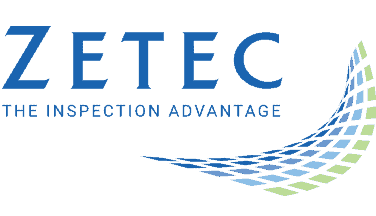What is the Best HTHA Assessment Strategy?

A High Temperature Hydrogen Attack (HTHA) campaign is one of the most difficult nondestructive testing (NDT) inspections. The challenge is that many NDT strategies fail to read early forms of cracking and other aberrations that degrade asset integrity. Therefore, analysts need advanced NDT measures that can read defects that are smaller than 0.004 inches using multiple angles and strong signal quality.
The best NDT plans for HTHA inspections include phased array ultrasonic testing (PAUT), time-of-flight-diffraction (TOFD), and a total focusing method (TFM), all of which can be combined to achieve a robust probing regimen for HTHA assessment.
The Best Techniques for HTHA Assessment
Due to the minuscule nature of many HTHA deviations, standard ultrasonic testing (UT) cannot detect them. To make matters worse, conventional UT mechanisms provide fixed beaming angles that can’t capture indications situated in awkward positions. As a result, technicians risk missing entrenched damage.
However, three primary UT choices can pinpoint problematic sections with greater clarity: PAUT, TOFD, and TFM.
PAUT Benefits
With PAUT, analysts can take advantage of the following benefits:
- Multiple wave angles from a single beam
- In-depth focusing and beam shaping
- The replacement of linear scanning with raster motion, fostering comprehensive coverage during testing
PAUT can combat awkward flaws with diverse angles from a single probe, dispelling the need for frequent probe changes. Additionally, the wave-beam customizations allow users to discover subsurface blemishes that are hard to read. Despite the many benefits of PAUT, however, there are times when it needs an extension.
TOFD Benefits
You may encounter scenarios where PAUT alone isn’t enough to obtain a resolute inspection. For instance, if there are large macrocracks in hard-to-reach areas, or you need to screen the heat-affected zone of welded regions. In these situations, you can combine PAUT with TOFD to achieve a more thorough inspection. The PAUT mechanisms help technicians find planar and surface-breaking flaws while TOFD can showcase and measure the flaws outright, even through-wall sizing of far-surface cracks.
Take note of the following TOFD features:
- Can expose indications in a precise location
- Can highlight flaws with added clarity and measure them accordingly
The integration of TOFD and PAUT will reduce the number of maneuvers and scans during the campaign. The same can be said for TOFD Ultra Low-Angle probing (TULA): TOFD techniques that can inspect thick welding components with ease. TULA can also determine clustering or high-noise reflections within the A-scan signaling, highlighting potential HTHA defects in the early stages.
TFM Benefits
The combination of TOFD and PAUT with TFM streamlines inspections for HTHA defects. Analysts can use the frames that TFM produces to interpret events in real-time and store the frames for every position of the probing, fostering a resurgent view of the weld. The TFM utilizes the maximum capabilities of each probe element, which further intensifies the waves to the flaws.
Further, TFM can retain prime focusing over a larger testing area within each frame point, but only with the assistance of the array probing and the wavelength. Finally, TFM readiness should have a quality focusing apparatus that gives technicians further insight into detected aberrations. A TFM of one million data points per frame gives users maximum focusing abilities, providing a more detailed presentation of defects.
HTHA Application Note: Read more about HTHA inspection challenges encountered and their solutions.
HTHA Assessment with Advanced Procedures
Since HTHA flaws can be easier to overlook, NDT analysts need a comprehensive approach to finding small flaws and precarious cracking. Techniques such as PAUT, TOFD, TULA, and TFM are some of the best choices in the industry, showcasing methane buildups that cause cracking or fracturing. More importantly, the combination of these advanced techniques into a single method can reveal some of the most entrenched flaws.
With that, HTHA assessment is not complete without quality equipment that enhances PAUT probing and provides TOFD and TFM options within a single unit. Technicians must purchase solutions that include powerful software, buffering the probing techniques during the testing session. With these high-tech and cutting-edge methods, companies can effectively find HTHA deviations that can degrade welding and lead to safety hazards.
Zetec is a major provider of UT equipment that provides PAUT, TOFD, and TFM in one instrument. Contact us today to get a tailored inspection plan, including probes and instrumentation that can shorten inspection times and highlight more flaws. To learn more, read about our on-demand webinar on Advanced Ultrasonic Technologies to Detect and Assess HTHA and view it today.
